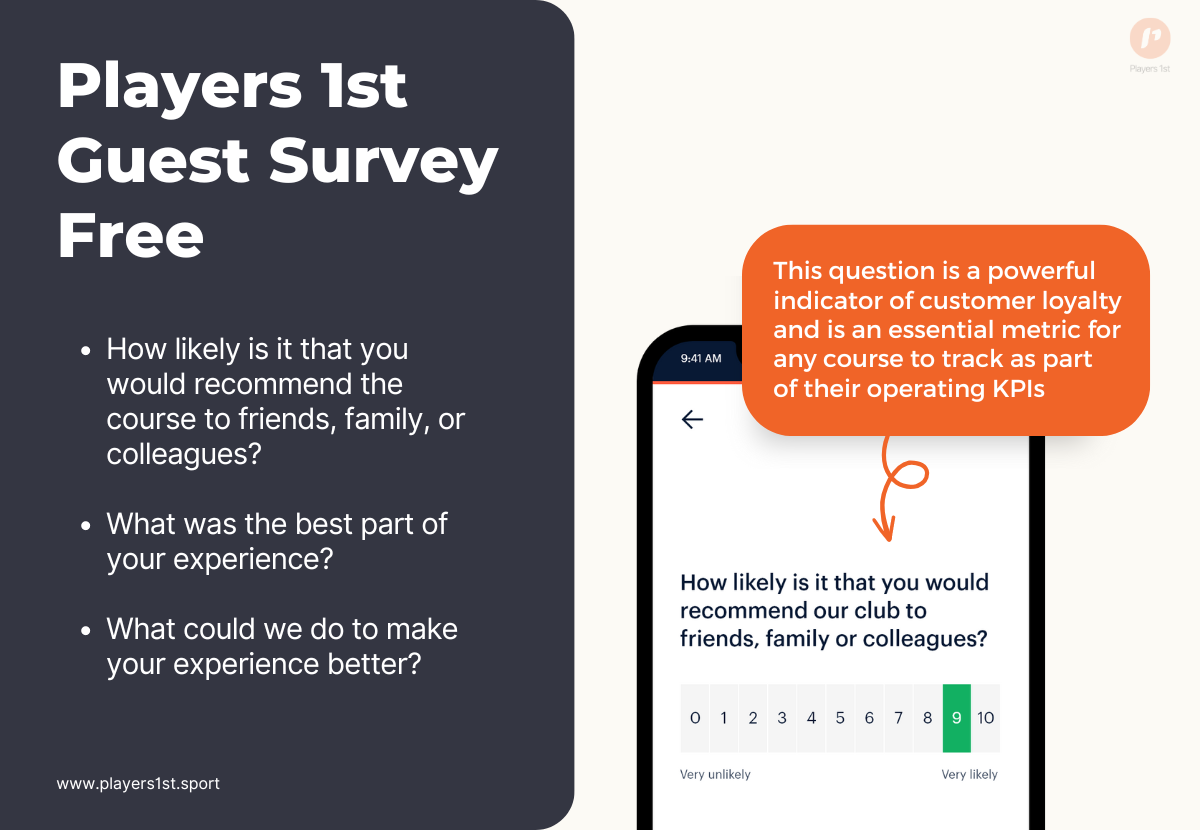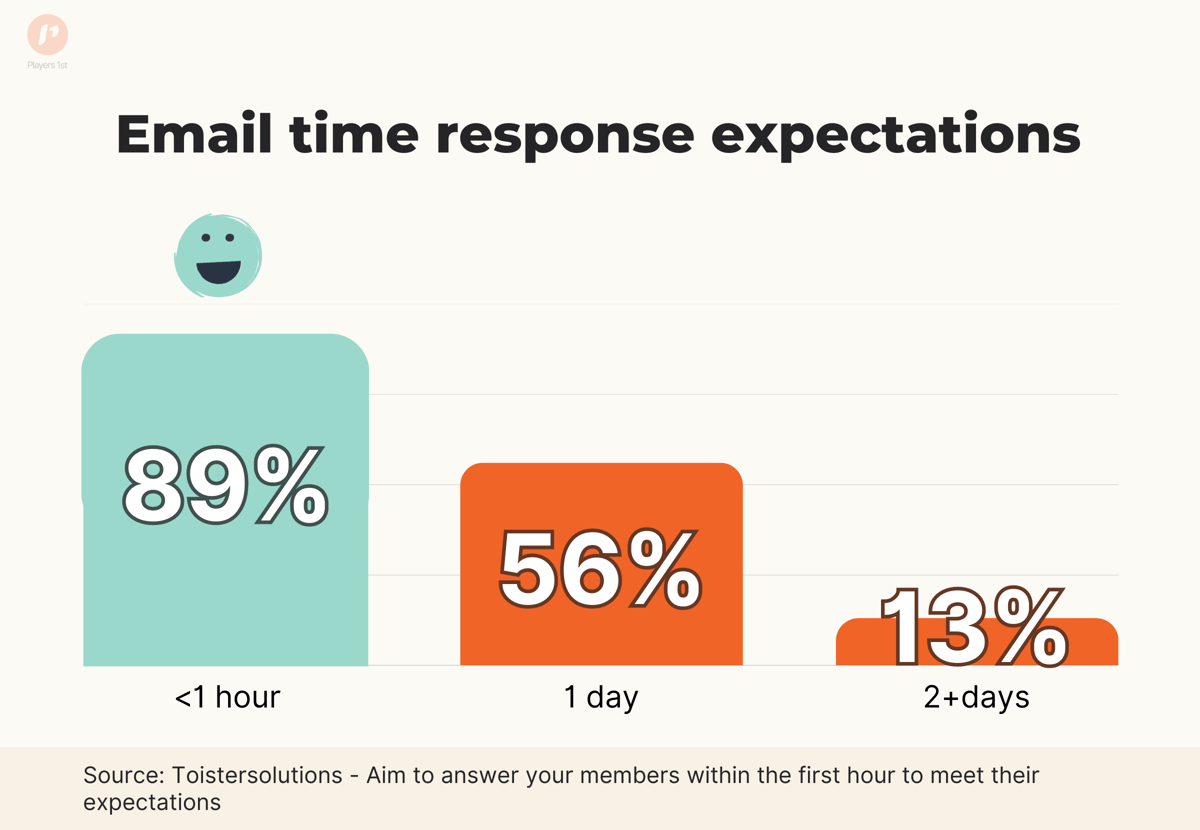No golf club can consistently deliver top-notch service. At some point, your club will fail to provide an outstanding player experience. And that can result in unhappy members – also called detractors. What separates leading golf clubs from the rest of the pack is their use of these 5 methods to address the problem.
Have you ever heard about detractors in golf? In fancy words, we describe them as members with a negative NPS. But basically, a detractor is someone very unhappy with your club or any of your services. They're likely to turn their back on your club, never return, and spread negative word-of-mouth.
But hey, they aren't born as villains. In most cases, detractors only come to life because of a poor experience at your club. This could be the club's lousy menu choices. Or maybe they find your staff to be rude. Well, the list of where bad experiences can occur goes on. And on. And on.
So, what can you do as a golf manager or club owner in this matter?
Use the following 5 essential steps to ensure that your team can effectively deal with detractors.
Players 1st
Step 1 - Set up the lines of communication
If you truly want feedback from your players and members, you need to give them a platform where they can express their needs and opinions. If golfers have a bad experience, they usually only share it online if they cannot talk to anyone else. And if another golfer sees the complaint online, this person may think twice before giving your club a go.
For that reason, making the club's contact and email information easily available is an obvious first step in heading off a negative online review. If you also set up a comment form for your course, the complaints will hopefully end up in your inbox and not for everyone to see on the web.
But there are actually a few more efficient ways to show your guests and members that you really care about their experience at your golf club.
With an automated survey solution, your players will automatically receive a thank-you note by email after completing their last round. This email will include a link to a quick survey to start the conversation about their experience with your club. Your players and members can easily give their feedback. You can quickly respond to it. Jackpot.
And collecting valuable feedback has never been easier with a simple survey. By asking just three questions to your members and guests, you can get a solid start in gathering the insights you need.

The first question in the survey design above is a game-changer, and you probably already know why. The question is used to find the Net Promoter Score – a powerful indicator of customer loyalty and an essential metric for any golf manager or operator to track.
The other two questions in the survey create an entry for positive and negative feedback. And overall, the feedback can result in valuable input for you and your team working together to improve the player experience.
Step 2 – Don't leave them hanging
No one wants to be left on read. It is an absolutely horrible feeling. And it feels even worse to reach out due to a bad experience and then not receive any form of response.
Jeff Toister, a respected author and customer service consultant, conducted a striking survey on response time in 2018. It revealed that businesses need to respond to emails in one hour to meet the expectations of nearly 90% of customers. And this is actually also a good rule of thumb for golf clubs.

Basically, the quicker you respond to a golfer's concern, the better chance of turning a negative situation around. And the longer you wait, the fewer members will find your late response alright.
Members and players who receive a fast response to their concerns feel that their input has been heard and taken seriously. And this is crucial. Because suddenly, you have an excellent starting point for a dialog to fix the issue.
But we get it.
While this sounds great in theory, making it happen in the real world is tough. Here, time is the biggest challenge. Because you already face a long list of essential tasks required to keep course operations moving on a daily basis.
So, who should be the person sitting behind a laptop responding to emails within an hour?
With the power of technological tools and push notifications, your staff can get real-time alerts and respond to urgent needs in a heartbeat. And sometimes, by responding to complaints that the team can quickly fix, such as dirty toilets or trash on the course, you can stop the making of a detractor.
Players 1st
For example, with a subscription to Players 1st, you can setup different real-time notifications to let your staff know whenever new complaints pop into the system. The notifications include the golfer's comments and contact information so you and your team can respond via smartphones or other mobile devices in a flash.
Step 3 - Listen and acknowledge
With effective communication lines and technology in place, there are no excuses for not collecting feedback. Now is the time to make your players and members feel heard.
The first thing to do when a member has concerns is to listen to their full explanation – and you need to listen carefully without interruptions. After their description, you can show that you understand how the person feels, even if you do not see things from their perspective.
Players 1st
In an ideal situation, talking in person or on the phone is best. But in some cases, all you have is an email address. But, whether you speak to the member in person or over text, starting the dialogue is always extremely important to prevent the complaint from escalating into a bigger problem.
And you know how the saying goes about customers and their opinions. But customers and members are definitely not always right. As a golf manager or venue operator, you can still be sorry that the golfer had a disappointing experience. Because, while golfers rate their experiences differently, you are always the one responsible for providing a great experience that lives up to expectations. And they will blame you if the experience is not good enough.
In short, negative feedback may be tough love. But without it, you would not exactly know how to deliver an exceptional player experience that makes them want to return. So, always thank your members for their feedback, even if it is negative.
Step 4 - Focus on the solution
Only after you have listened to the golfer's complaint and acknowledged it can you offer your side of the story. Not as an excuse. But as an explanation. Sometimes, the golfer might have misunderstood something or lacked general information. Explaining your course's procedures and the reasons behind them might prevent the golfer from becoming a frustrated detractor.
Keep it short. The more you say increases the chance of raising another argument. And keep the conversation moving toward a solution.
Players 1st
Finally, make sure you can deliver on your promises. Obviously, you will not drastically change how you run your club because of a single complaint. But there may be other steps to find common ground with the unhappy golfer.
You could make minor adjustments in how you do things or talk to an employee to ensure the situation does not happen again. Explaining your actions will show the member that you value the feedback and take it seriously.
Depending on the complaint, some sort of discount for future purchases can also lighten the golfer's mood. This could be a discount code for a round, which lures the player to return to the club for an additional, and hopefully more positive, experience with your course.
Step 5 - Learning from customer feedback
Sure. It can be a bit overwhelming to receive feedback – especially if it is from frustrated detractors. But trust us. Taking the time to listen to your players and act on their feedback is a powerful ingredient for creating better experiences and preventing detractors from dominating your golf club.
But we must be honest with you: Using feedback takes time.
Dealing with customer complaints should not just be considered merely a fire-fighting exercise. It is an ongoing process that requires attention to structural matters, such as how you run the club or having enough staff and the right team to handle the demand.
Players 1st
Being at the club constantly as a golf manager can also make it hard to see the necessary changes. And this is why guest and member feedback is precious. If you do not address these issues, the complaints will come back to haunt you again and again, resulting in more detractors who could damage your club.
By having an ongoing dialogue with your players and members through a robust customer experience management tool like Players 1st, you can collect more detailed feedback and gain richer insights into how your club performs at different touchpoints. Basically, you will find the root of any problems or identify where your club stands out in a positive way.

You can gather all this feedback together and interpret it using dashboards and data analytics. This provides you with the necessary tools to improve your club's member and guest experience, creating a constant cycle of improvement and reducing the number of detractors.
So, there you have it. These are the 5 critical steps to dealing with detractors at your golf club.
These other stories

Why customer experience management is especially relevant in the golf business

5 ways to increase survey response rates at golf clubs

Boost your golf club’s revenue with guest surveys
LET US PING
YOUR MAILBOX
Boost your club’s member and guest experience to stay ahead of the game! Unlock expert insights, pro tips, inspiring club success stories, and more…